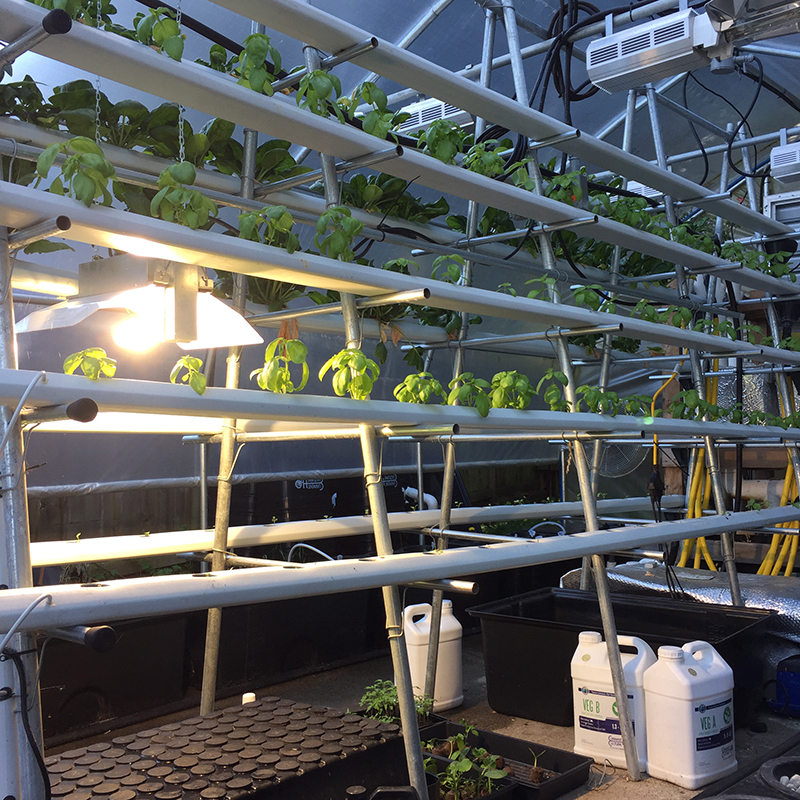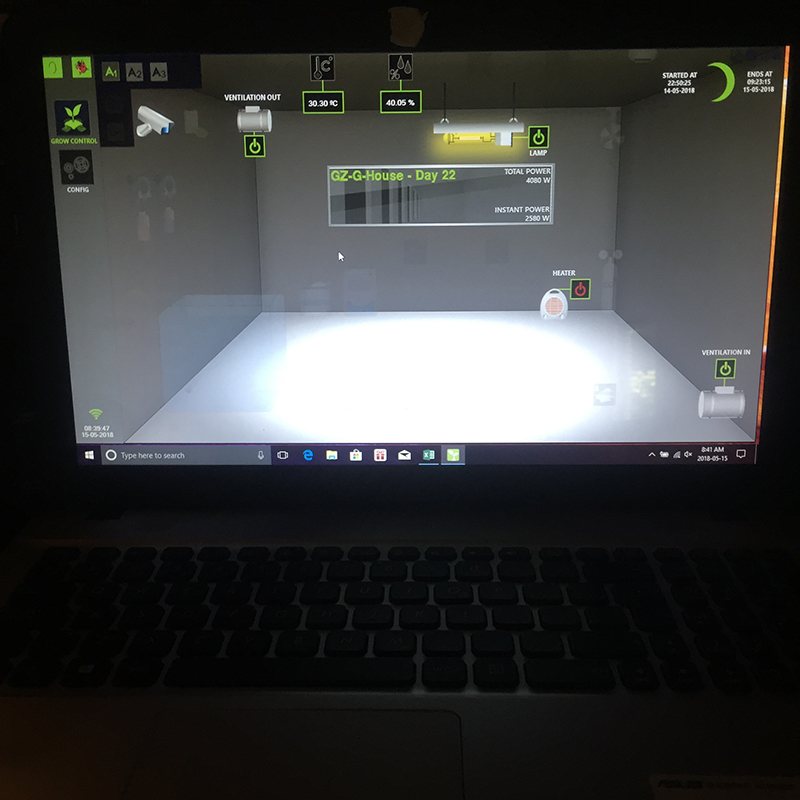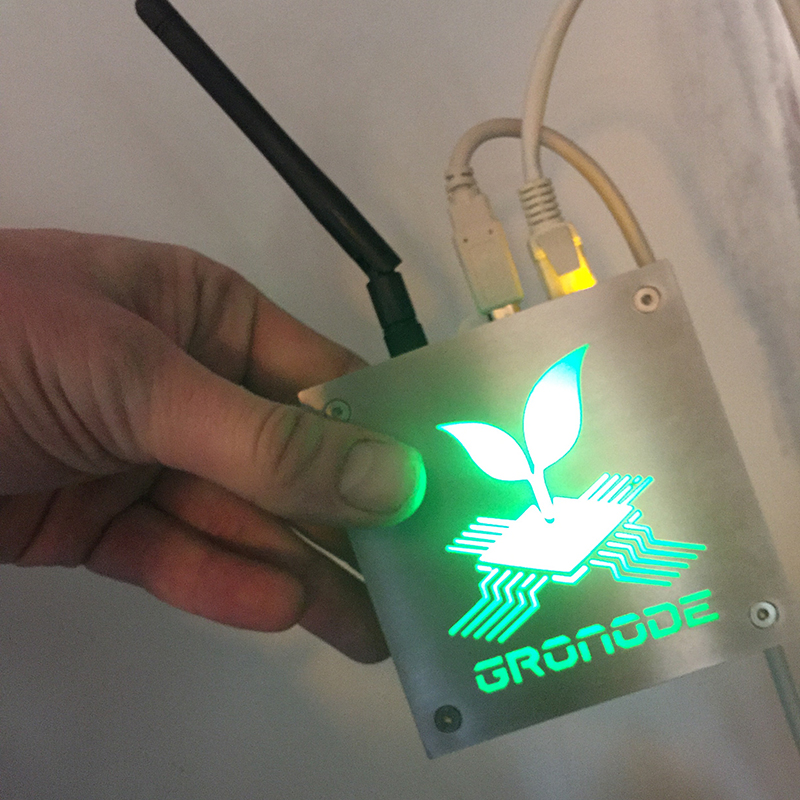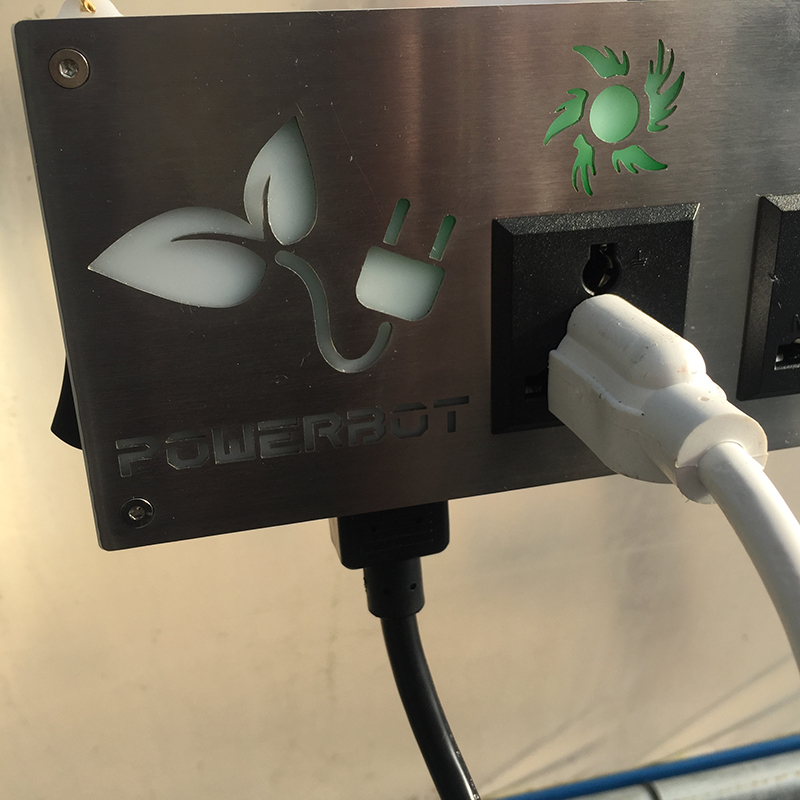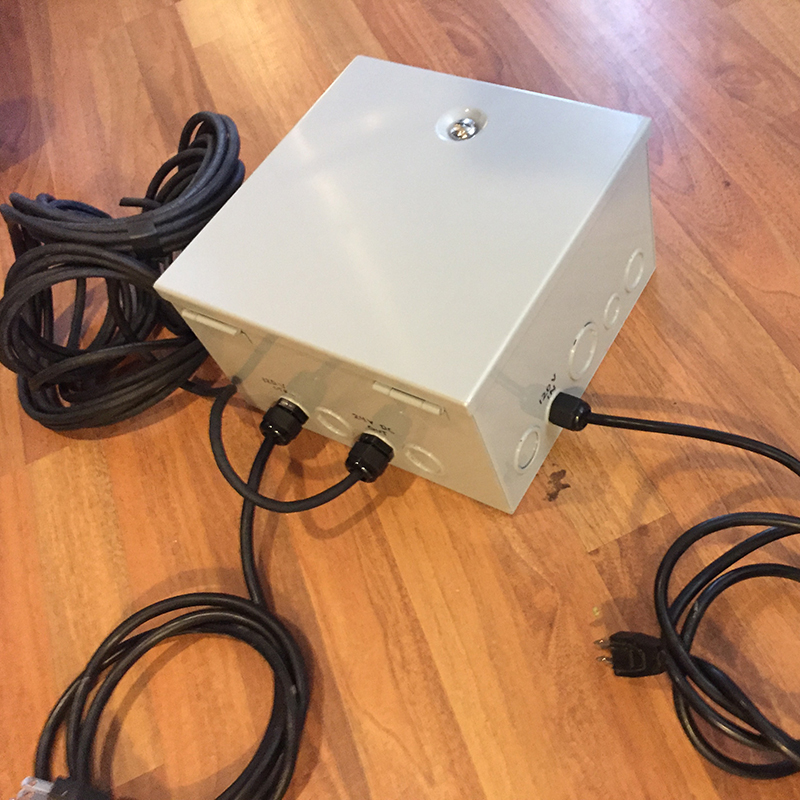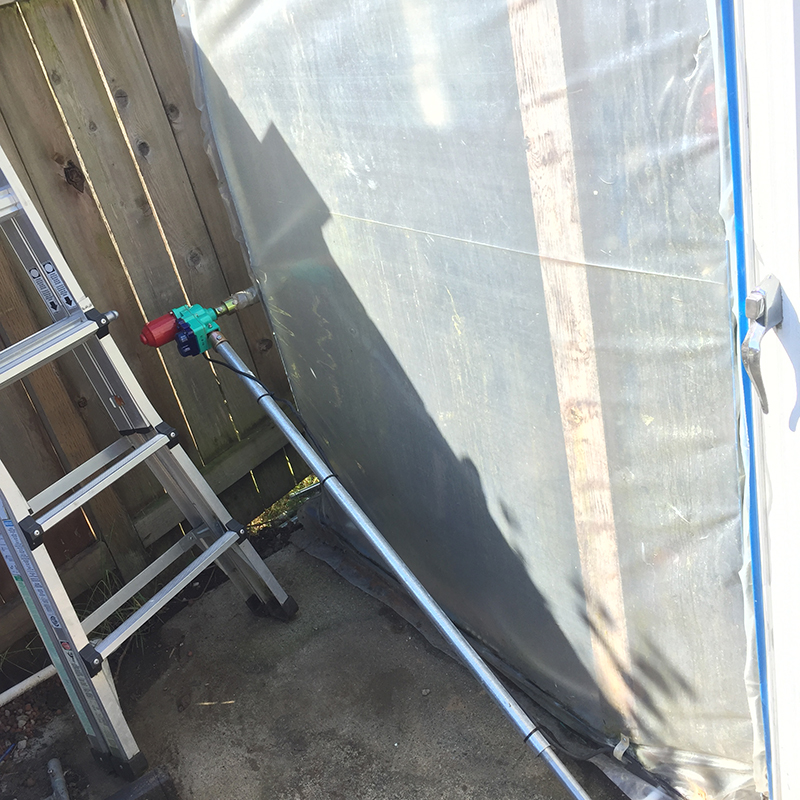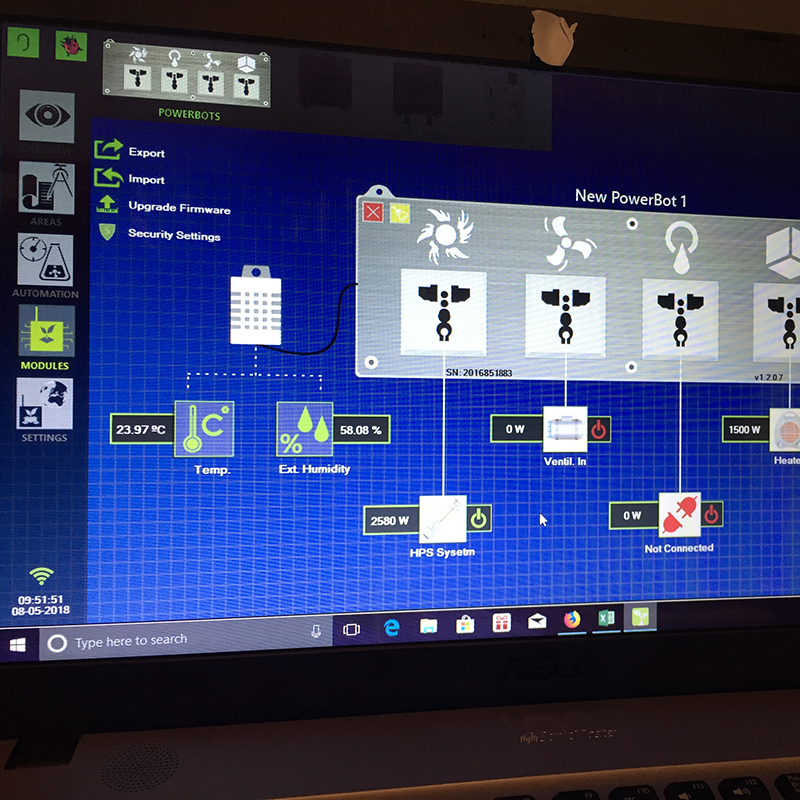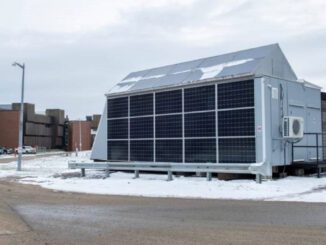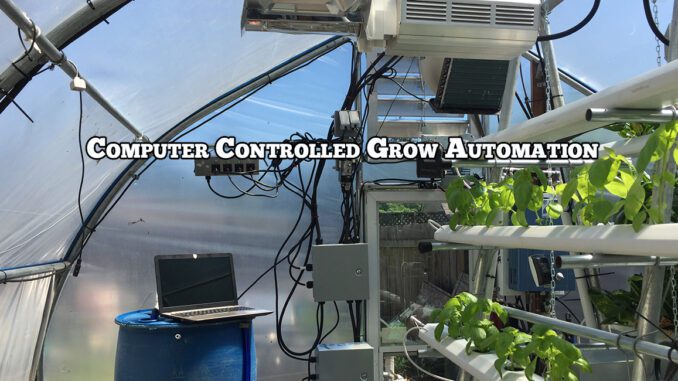
Computer Controlled Grow Automation Part One
Smart Grow Controls for Grow Rooms & Greenhouses
Computer controlled grow automation gives indoor or greenhouse hydroponics and soilless growers an entirely new set of tools and methods to benefit their growing operations or grow rooms.
While analog controls have been able to perform simple tasks like cooling, managing humidity, adding CO2, irrigating and operating grow light systems what they have not been able to do is Think or Work Together, as one unit. It’s like having a team full of players that don’t know they are playing on a team together and lack the ability to communicate.
[quote]having remote and tight control over our environment, ie light and temperature was slated as Phase One in our trialling of computer controlled grow automation.[/quote]
Why Computer Controlled Grow Automation
Computer controls for grow automation overcome the limitations that analog grow controls carry Computer controlled grow automation brings valuable tools to the job growers need to accomplish in order to harvest crops of heavy yields and high quality.
Like most gardeners, we at Grozine are very “hands on” and wanted to see what computer automation could do for our climate controlled hydroponic greenhouse, which by the way, operates very similar in most respects to any indoor grow room, ie we control ventilation, lighting, temperature, etc to supplement the naturally occurring conditions we grow under in the greenhouse.
We quickly discovered that there are a number of options out there in the growing world of computer controlled grow automation from a variety of companies. One that really jumped out at us was OpenGrow.pt (Portugal).
What We Want in Computer Grow Controls
After further research, we opted for the GroLab Starter Kit to, uh, well, get started in computer controlled grow automation.
Some of the reasons we gravitated to the GroLab Starter Kit:
-very plug and play while still giving lots of options for connectivity (we don’t have heaps of experience in setting up networks; we need something automatic and proven)
-highly flexible, the four powered outlets can be used for complex and smart control of just about any kind of equipment in a grow set up because of the high level of command ability from the user end of the interface; in short easy to get the members of the band singing together
-lots of communication available from the company so we can rest assured of support, as needed; they got back to us about anything right away, even from a completely different time zone
-easy to use and understand computer interface; where we tell our gear what to do makes sense and is easy to navigate.
-atheistically the GroNode and PowerBot look very clean and there isn’t much in the way of wires or plugs involved; ie streamlined set up in compact devices and communications
TIP: You can try the interface out before you have to buy anything, ie get a sense of how it works and what it can do for no cost.
Here’s where you can try it out Free on Windows | Click HERE |
Above: the GroNode does the “talking” with the rest of the system
How Much Power Can it Handle
With the proper installation and use of power relays, you can switch and communicate with heavy duty appliances like lighting systems, air conditioners, de-humidifiers, heaters and the likes. Just plug your appliance into the relay box, then the control cord from the relay into the PowerBot.
For hobby growers, the PowerBot can handle most set-ups directly, ie directly plug in 600 watt grow light, centrifugal fans, dehumidifier and pump or co2 dispenser. Note that it comes available as a 110V or 220V version, with the 220V version giving you double the power capabilities.
Computer Controlled Grow Equipment
While we had an idea of what we wanted to do with our computer controlled grow automation, we truly didn’t understand the capabilities until we started using the GroLab kit. For example, we knew that controlling our supplemental lighting systems was a for sure, as well as heating and cooling for our hydroponic greenhouse.
NOTE: OpenGrow offers some AWESOME looking controls for hydroponics reservoirs or soilless fertigation systems—that’s on the TO-DO list, but we had to start somewhere without getting overwhelmed or breaking the bank. So having remote and tight control over our environment, ie light and temperature was slated as Phase One in our trialling of computer controlled grow automation.
To date, here’s what we have the GroNode (communications device) doing with our PowerBot:
Lighting System
Two different grow light lighting cycles per day (you can have as many on/offs per day as you want) to supplement natural sunlight based seasonal day lengths and intensity. It was also really easy to tell the control to shut the lights off if the temperature continues to rise past a set point we created—and in the event that it does, will notify us by email or create a variety of alerts we set up. We also set it to delay 10 minutes between shut offs and power ups with HPS lighting.
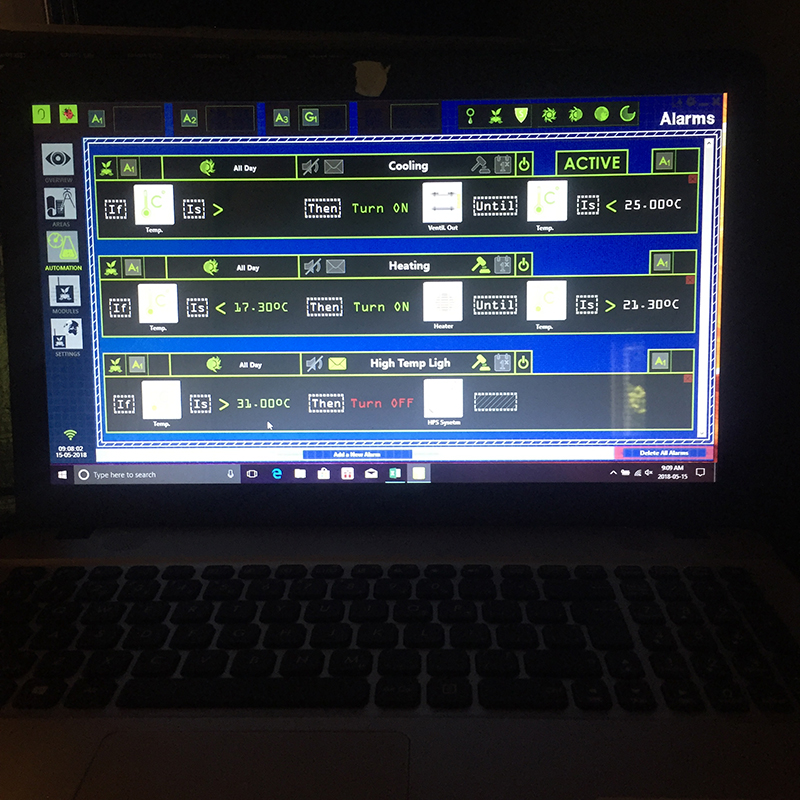 Above: Simple to Set, Any Variety of Functions is Possible. You can set priority to functions too.
Above: Simple to Set, Any Variety of Functions is Possible. You can set priority to functions too.
Ventilation
Every hour, for one minute, the system will open a motorized shutter on the greenhouse to allow for fresh air to come in. From the same plug and appliance, we also have this vent set up to open as Step One in our cooling system, ie if it gets over 24 deg C it opens until the temperature drops below 22 Deg C.
Here’s a quick demo, where we override our programming to open and close the vent with a click of the keyboard:
[youtube width=”560″ height=”315″ video_id=”DJeQXKe8Vvk”]
Cooling
We recently added a 24V automatic greenhouse roll up motor to one of our roll up side walls (btw, which after trying, we will be installing a second). So now if the temperature rises above 26 deg F (our set point, as Step Two in Cooling System) the one side of the greenhouse poly rolls up the side, giving lots of air exchange. Once below 24 deg C it will automatically roll back down again.
NOTE: With both roll up sides open to five feet above grade and the passive automatic vents that open on both of the gable ends, the temperatures on very hot days can stay at ambient or even a couple degrees less via evaporative transpiration—no need to rely on noisy or power hungry fans that desiccate leaves.
Above: 24 Volt Roll Up Side Motor; automatic efficient greenhouse venting; adapatable to black out
Heating
For the majority of the year, while varying with seasons, our greenhouse also uses supplemental electric heating—especially during the night cycles. Since this is power hungry endevor, having tight control over heating cycles can help reduce costs via electrical savings.
Setting Up Computer Controlled Grow Automation
We’ll be the first to admit, while we might know our way around computer basics, we are not programmers or networking people. What we have learned from past computer automation experiments many years ago still holds true: don’t be under the gun with time to make the switch and get set up; transition over to computer controlled grow automation one appliance at a time and you will save on potential stresses. That’s golden.
Out of the box, the initial steps to get the GroNode (communications) linked to our PC and then to the PowerBot were surprisingly easy—literally just a few steps and a few things to plug in and we were all set to start commanding and automating our equipment.
Like a lot of people, we are always anxious to get started on something new and exciting as fast as possible, however, when it comes to stuff like this it pays back to take your time and explore what the system can do, and how to tell it what to do—ie learn to control one thing at a at time as well as how to work the interface itself.
Naturally, we are always busy doing other tasks in the garden and in life and general, and with that said, once we got started in earnest, inside of a week we had the greenhouse running like a fine watch—and having it tell us what’s going on at any given minute, while sending alerts if there was anything that needed our immediate attention.
In reality, we are just scratching the surface of what this platform can really do, ie additional PowerBots and other modules like TankBots for total control and monitoring of our hydroponic systems.
So stay tuned for more, as we see how the GroLab Starter Kit performs overtime for a full and in depth review—as well, we aim to expand on our existing computer controlled grow automation set up by adding on other modules like the TankBot and additional PowerBots or environmental controls for setting up different Zone Controls, ie propagation (aeroponics cloners), Raising Transplants (pre veg under lights in high densities), and getting more complex with heating, cooling, lighting and ventilation.

